16:30S 145:27W Fakarava (Tuamotus)

Toucan
Conor & Marion Wall
Sun 10 Jul 2011 19:35
|
Fakarava an atoll in the Tuamotus
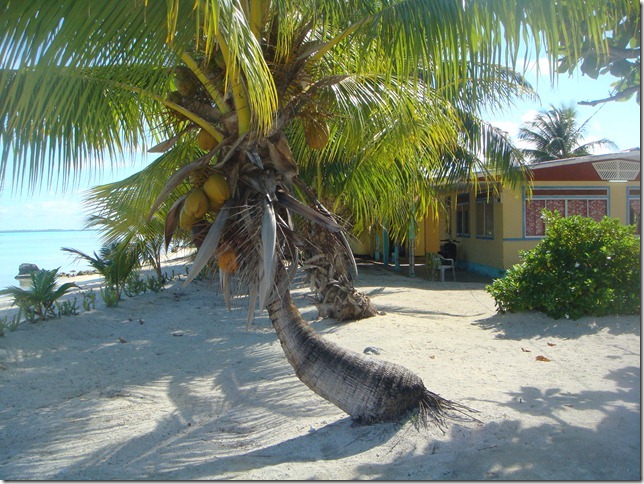 That’s not a bad word its an island, well not really an island but an atoll
which is the rim of a very old crater that has sunk and now basically a ring of
coral with sandy patches on the rim some large some small. This particular rim
is probably 100 miles circumference the rim being no more than a few hundred
meters wide, perhaps half a mile in places so for example the island (known as a
Motu) at the North end of Fakarava where we anchored was about 25 miles long and
mostly only a few hundred meters wide.. The last atoll that we visited (Kauehi)
was a circle of about 8 miles diameter. There is one or sometimes two or three
passes for boats into the atoll some have no passes so you cannot enter. Once
inside it is generally well sheltered from the Pacific swell but the large
atolls can get very rough in strong winds depending on where you are anchored.
Even though they are reasonably shallow inside the atolls, 35 miles is a long
way for waves to build up if anchored in the wrong place. They are very low
lying and you can only see them from about 7 miles when approaching by boat. The
Tuamotus group is made up of a bunch of these atolls, maybe 20 or 40 and in the
days before GPS were seldom visited due to the very dangerous navigation around
and within. The two most eastern of these atolls have a lovely name, they are
called Disappointment Islands, probably because there is no way inside and
nowhere to anchor on the outside.
 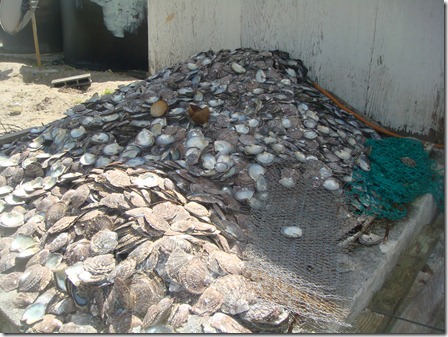 Coconuts ready for market and left over oyster shells having had
the Pearls removed.
Entering these atolls, the depth drops from a depth of sometimes 2 miles
deep to 20 meters deep in as short a distance as a quarter of a mile. The
current flowing in and out of the pass is sometimes extremely strong up to 10
knots on some and some have a standing wave where it enters the deep water
outside the entrance, often impassable on the ebb tide. So we try to enter and
leave at slack.
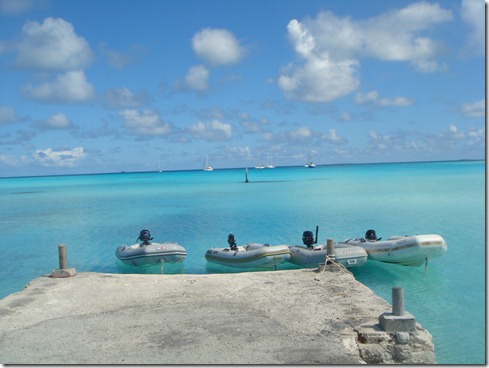 The gathering
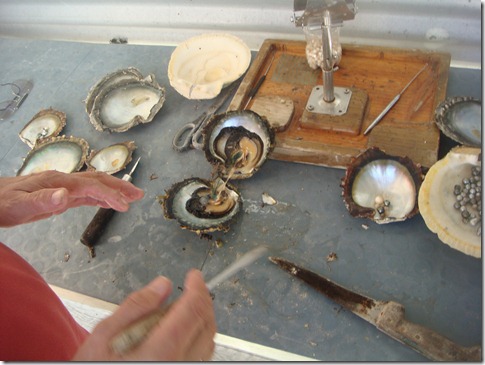 Our visit to the Oyster Farm
We only had time to visit two of these atolls, Kauehi and Fakarava. At the
southern end of Fakarava there is a second entrance, we entered at the North and
stayed a few days there then followed a marked channel that weaved a path
through coral heads often just below the surface, for 30 odd miles to the
southern entrance. Here we had the most amazing snorkel ever. I have dived and
snorkeled all over the world but this was amazing. We did a couple of drift
snorkels i.e. we went out to the outer edge of the pass as the tide was about to
change and slowly drifted back into the atoll, along the reef, with the current.
The fish were amazing with too many to describe. the colours were better than in
the movie ‘Finding Nemo’ and the variety of fish large and small was just
unbelievable. At one point we had 8 sharks around us, these were black tipped
reef sharks which are generally not dangerous unless provoked. My attitude to
sharks has certainly changed following this dive and another in the Tuamoutus.
Nonetheless Marion and I stayed close together and close to the dinghy which I
was dragging on the surface as a means of a quick escape if required. I had time
to get acquainted with a Napoleon fish (you will have to look that one up in the
book) but he was almost as big as the sharks and was not too worried about our
presence and we were almost able to stroke him.
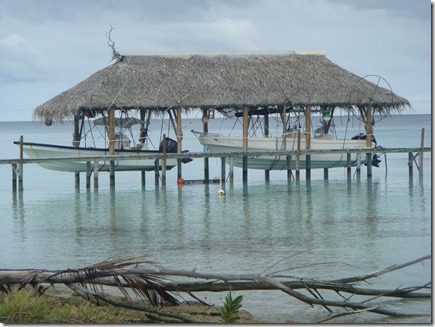  All around French Polynesia boats are lifted in this fashion,
notice the large wheels for turning ropes on to a wooden shaft, so
simple.
We anchored there in sand an coral with large coral heads that kept
snagging the chain so by the time we came to leave our chain had been let out to
maximum (60 meters) and we now had to pick our way zig zag to retrieve it and
the anchor. Often people have to dive to retrieve but we were lucky. The reason
for the large amount of chain was mainly to do with the fact that we had very
high winds for two of the nights (up to 40 knots) and with the wind shifts the
chain would snag under a coral head in effect shortening the scope on the
chain. During the high winds there were some very impressive waves breaking on
the other side of the coral reef that protects the lagoon.
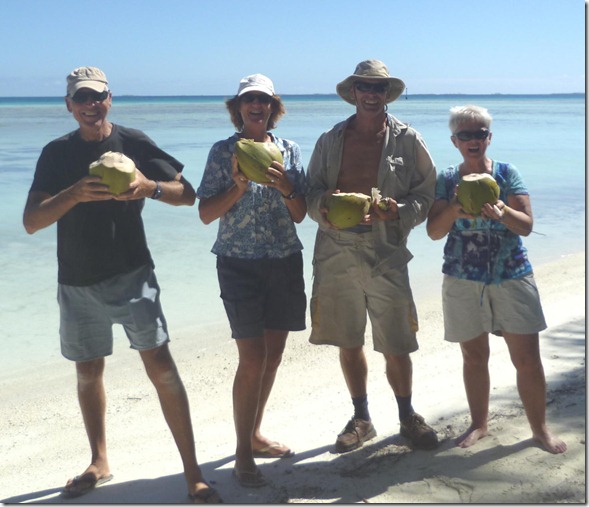 Coconuts plucked from the tree and opened by a local, so
delicious.
 Eating Clams direct from the sea again prepared by these local
friendly people.
As i write this we are on passage from the Tuamotus to Tahiti which is a
two day and two night passage.
 I wonder if he needs planning permission, building regs, health and
safety, etc. |